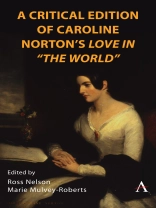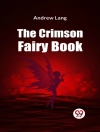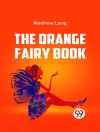Caroline Norton’s forgotten novel, which has remained unpublished until now, tells of the perils of courtship facing a naïve young girl Alixe, who has been launched onto the London social season. Her encounters with both a worthy and an undesirable suitor open an intriguing window onto the fashionable society of the 1820s in which Love in ‘the World’ takes place. Caroline was able to draw upon her own experiences of the bon ton and those of her elder sister, Helen. The time in which the novel was set coincides with their entrée to society in the mid-1820s. It was then that Caroline burst upon the scene with all her beauty and brilliance, later recalling “the night upon which she made her début, coming down dressed to the room where her mother and aunt were awaiting her.” She added, “I came out […] to find all London at my feet.”
She believed that London, “where the cry of the drowning suicide is lost in the hum of gathered multitudes restlessly pursuing the pleasures or the business of life, ” could be as callous as the metropolitan social scene might prove treacherous, and in alerting the reader to the dangers of fashionable society she made ample use of her own observations as a debutante at her first London season. In a highly readable and coherent narrative with an indeterminate ending, which throws a spotlight onto her life and times, the plot of Love in “the World” initially follows a pattern broadly representative of Norton’s own experience, before developing in unexpected and surprising ways.
It also anticipates the dilemmas faced by Norton’s young heroine Beatrice Brooke in her later novel, Lost and Saved (1863). Indeed the novel compares well with any of Norton’s finest narrative writing, such as The Wife and the autobiographical sections of her pamphlets. It is hoped that Love in ‘the World’, finally in print after almost two centuries, might achieve comparable recognition and inspire a wider reappraisal of Caroline Norton’s novels and stories. Edited by the team who recently published Caroline Norton’s correspondence, the book also includes a Preface by Diane Atkinson, a distinguished historian and biographer of Norton.
विषयसूची
Manuscript Cover Page and Frontispiece; Caroline Norton: England’s First Feminist Law-Maker; By Diane Atkinson; Introduction; By Ross Nelson and Marie Mulvey-Roberts; Editorial Note; Chronology; Foreword; By Ross Nelson and Marie Mulvey-Roberts; Volume I; Volume II; Notes; Publications, Websites and Archives Cited
लेखक के बारे में
Ross Nelson is a cultural historian and author of several publications, including The Selected Letters of Caroline Norton, 3 vols (2019), co-edited with Marie Mulvey-Roberts, and Letters to Martin Van Buren: An Edition of John Van Buren’s ‘Travel journal for a Trip to Europe, 1838-1839’ (2022).
Marie Mulvey-Roberts is a Professor of English Literature at the University of the West of England, Bristol. She co-edited, with Ross Nelson, The Selected Letters of Caroline Norton, 3 vols (2020). She is Editor-in-Chief of Women’s Writing, the journal on historical women writers.












